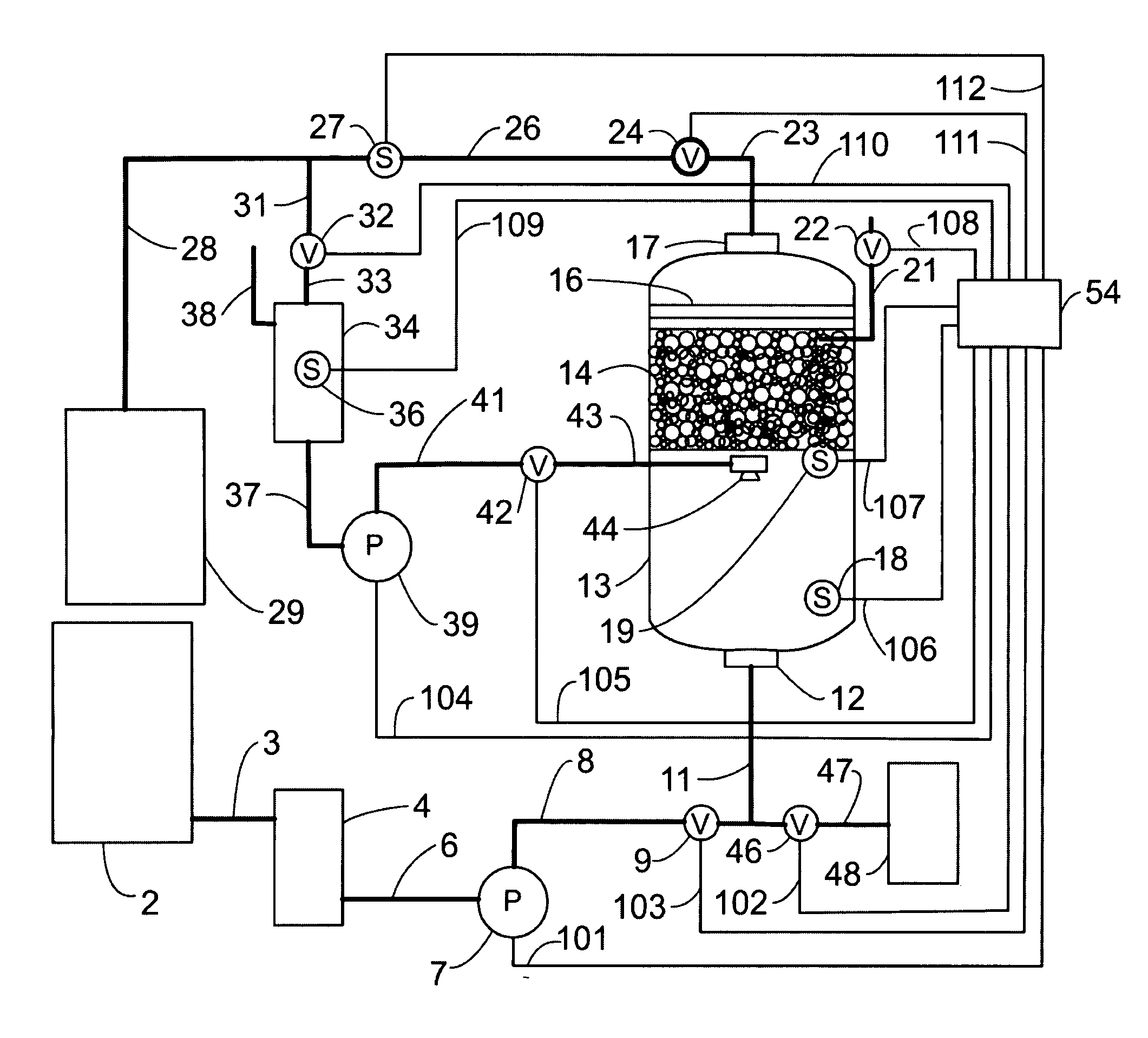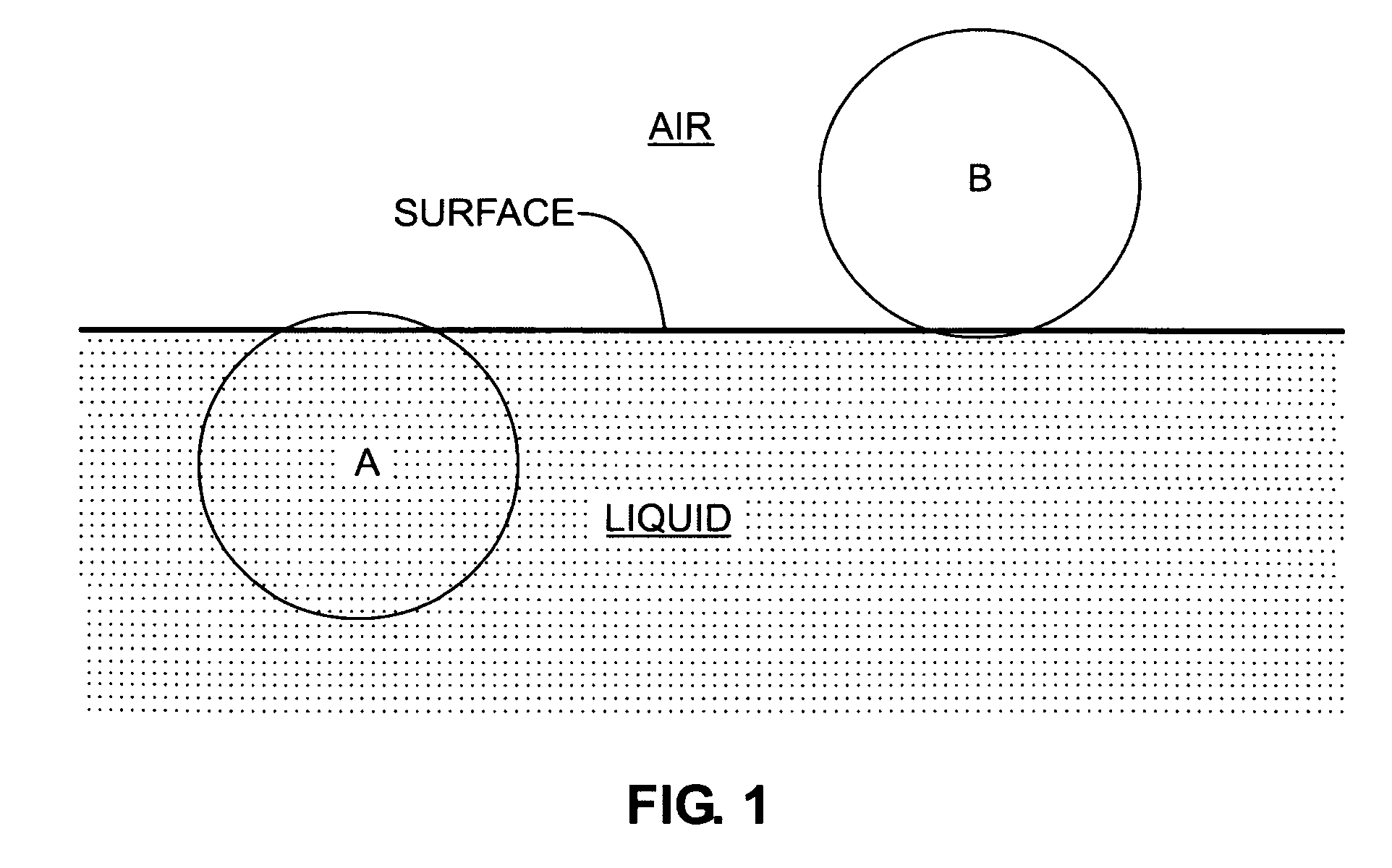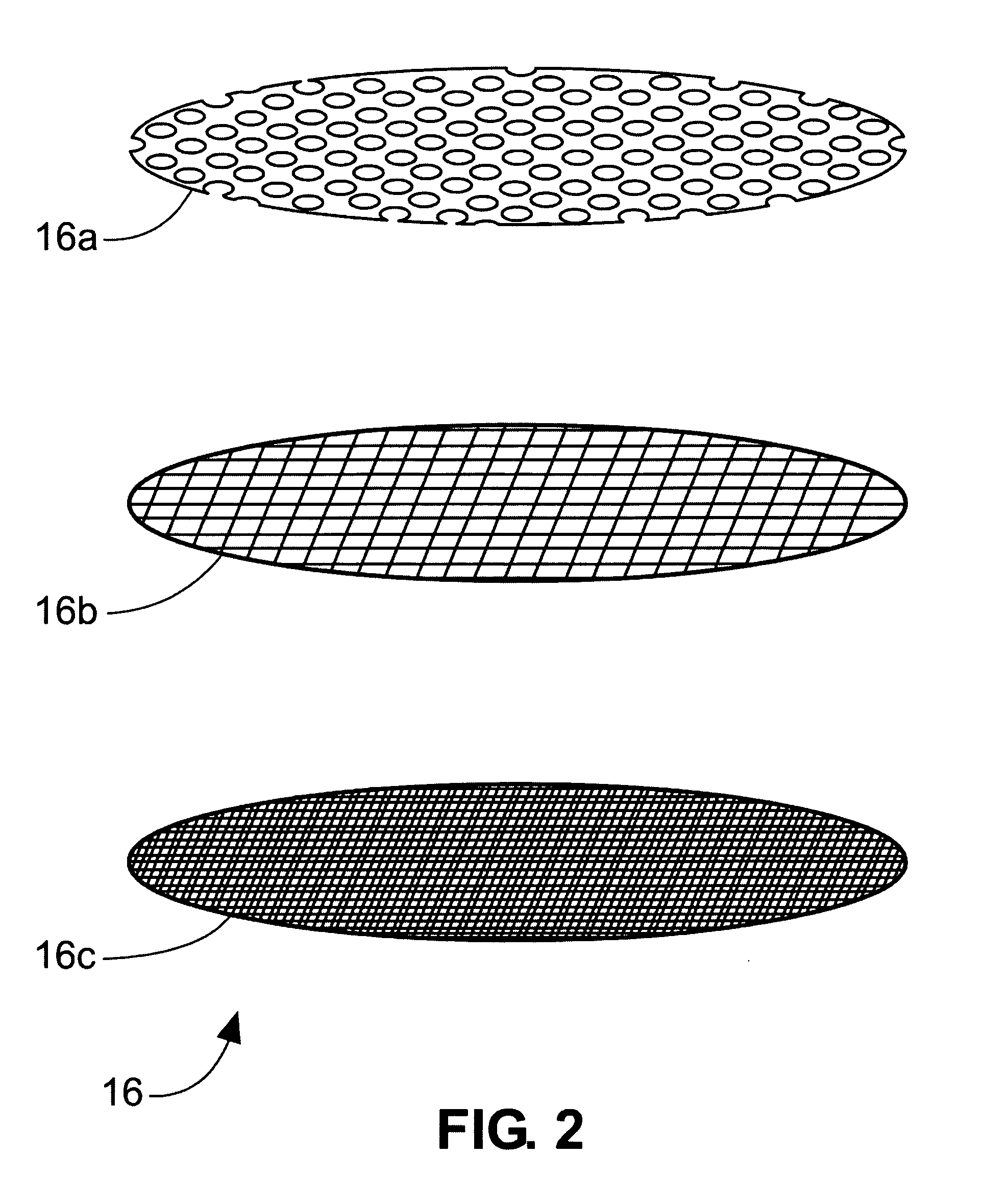Liquid filtration apparatus and method embodying super-buoyant filtration particles
a technology of filtration apparatus and filtration particles, which is applied in the direction of sedimentation settling tank, multi-stage water/sewage treatment, separation process, etc., can solve the problems of inability to completely remove the cleaning process, the filtration process is more expensive, and the top surface of the bed is clogged with large particles, so as to achieve the effect of reducing the number of filtration and backwashing, reducing the number of filtration and filtration particles, and ensuring the effect o
- Summary
- Abstract
- Description
- Claims
- Application Information
AI Technical Summary
Benefits of technology
Problems solved by technology
Method used
Image
Examples
Embodiment Construction
Single Filter Housing Embodiment
In this embodiment (FIG. 7), a central control system designated generally by the numeral 54 is used to monitor the sensors installed in the filtration system, and to turn “ON” and “OFF” all of the actuators (pumps and valves) required to operate the system. This control system may be operated either by manually actuated switches or by electronic switches activated by an embedded microprocessor. Although using a microprocessor makes the system somewhat more complex, it enables more efficient operation of the system as well as providing unattended operating capability during periods when no personnel are available to manually control the system.
During normal operation, the process liquid to be filtered is withdrawn from a reservoir 2, connected by a conduit 3, to a pump priming chamber 4. Alternatively, the liquid may also be withdrawn directly from a process liquid stream. Although not absolutely required, the use of the pump priming chamber 4 he...
PUM
| Property | Measurement | Unit |
|---|---|---|
| specific size | aaaaa | aaaaa |
| specific size | aaaaa | aaaaa |
| specific size | aaaaa | aaaaa |
Abstract
Description
Claims
Application Information
 Login to View More
Login to View More - R&D
- Intellectual Property
- Life Sciences
- Materials
- Tech Scout
- Unparalleled Data Quality
- Higher Quality Content
- 60% Fewer Hallucinations
Browse by: Latest US Patents, China's latest patents, Technical Efficacy Thesaurus, Application Domain, Technology Topic, Popular Technical Reports.
© 2025 PatSnap. All rights reserved.Legal|Privacy policy|Modern Slavery Act Transparency Statement|Sitemap|About US| Contact US: help@patsnap.com



